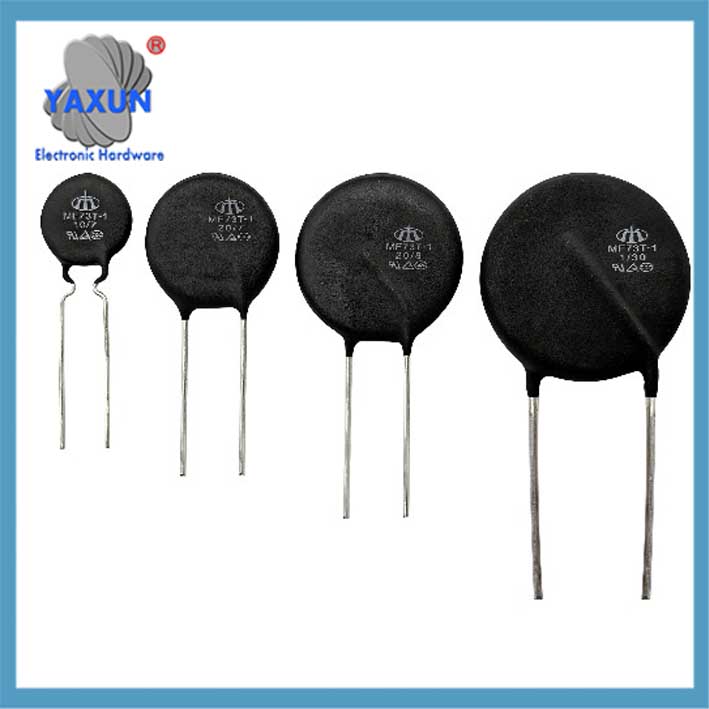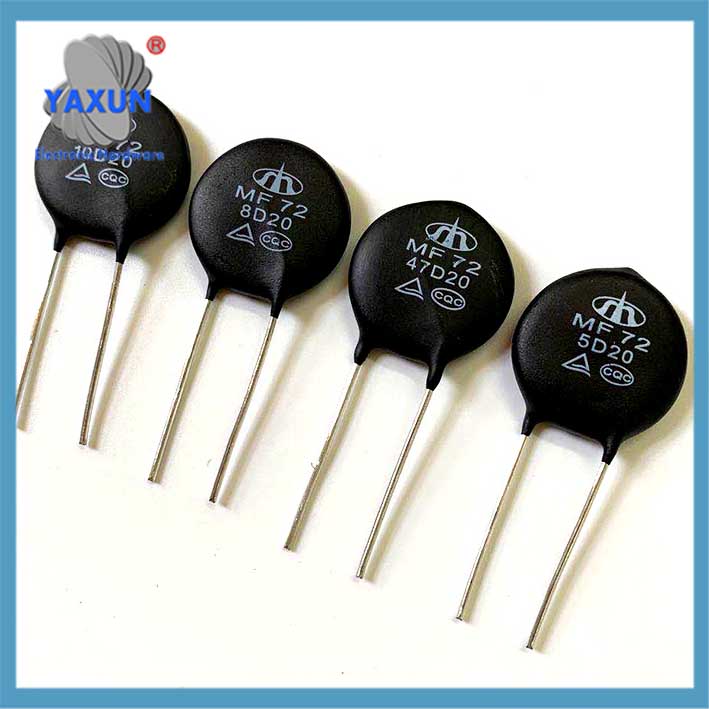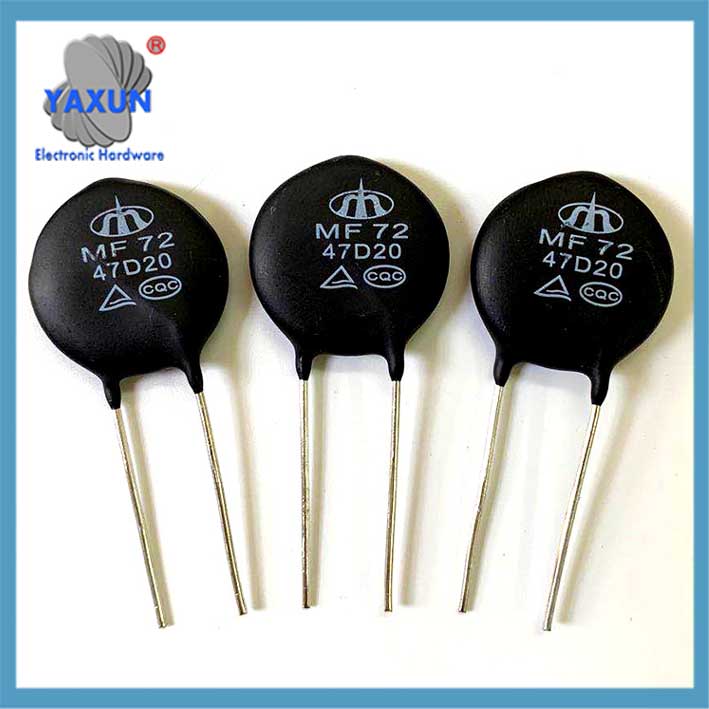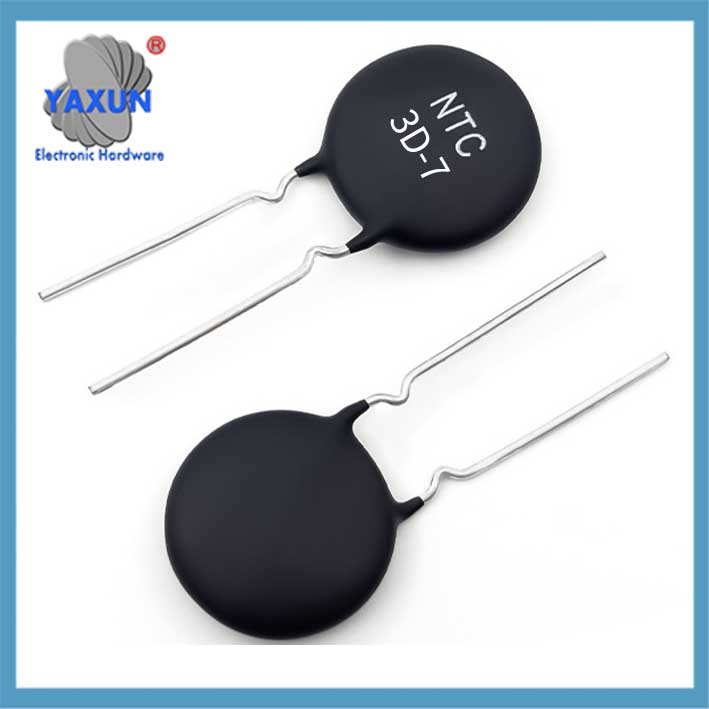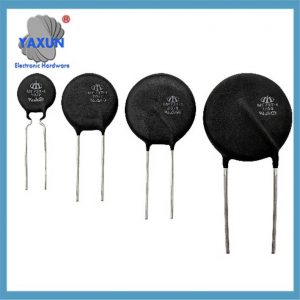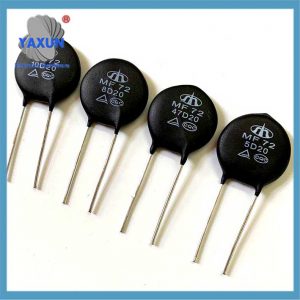제품 카테고리
- 온도 퓨즈 32
- 표면 마운트 퓨즈 12
- 서미스터 36
- PCB 마운트 퓨즈 홀더 27
- 배선 하니스 6
- 블레이드 퓨즈 홀더 17
- 온도 조절기 50
- 전기 퓨즈 24
- 자동차 온도 센서 7
- 열 회로 차단기 22
- 퓨즈 박스 홀더 36
- 온도 센서 75
- 열 스위치 68
- 자동차 퓨즈 20
- 퓨즈를 볼트로 낮추십시오 8
제품 태그
전원 서머 스터의 적용 및 선택
파워 서미스터 란 무엇입니까?? 파워 서미스터, 전원 NTC 또는 Inrush 전류 리미터라고도 함, 전기 회로에서 흡수 전류를 억제하도록 설계된 구성 요소입니다.. 그것은 음의 온도 계수의자가 심 특성을 사용합니다. (NTC) 회로를 켜면 서지 할 수있는 높은 전류를 제한하는 서미스터.
파워 서미스터 (주로 음의 온도 계수 NTC 유형) 전자 회로에서 서지 전류를 억제하기위한 핵심 구성 요소입니다.. 주요 매개 변수, 선택 지점 및 응용 프로그램 시나리오는 다음과 같습니다:
나. 핵심 기능과 원칙
전류 억제
파워 스타트 업 순간에, 입력 회로에서 직렬로 연결된 NTC 저항 값이 높습니다., 피크 전류를 제한 할 수 있습니다; 전원이 켜진 후, 열로 인해 저항이 빠르게 떨어집니다 (전력 소비는 무시할 수 있습니다), 후속 회로의 안정적인 작동 보장.
음성 온도 특성
온도가 증가함에 따라 저항 값은 기하 급수적으로 감소합니다: 아르 자형(티)= R0⋅EB⋅(1T -1T0)아르 자형(티)= r0 ⋅B거나(T1 -T0 1) (R0R0은 25 ℃에서 저항 값입니다, BB는 재료 상수입니다).
작동 방식:
높은 초기 저항:
전원이 처음 적용되는 경우, 파워 서미스터는 저항이 높습니다, 초기 Inrush 전류를 제한합니다.
자기 가열:
전류가 서머 스터를 통해 흐릅니다, 그것은 열을 생성합니다, 저항이 감소합니다.
저항 감소:
저항 감소로 인해 회로는 초기 서지없이 필요한 작동 전류를 그릴 수 있습니다..
이익:
장비를 보호합니다:
Inrush 전류를 제한함으로써, 전력 온도 조절 장치는 민감한 부품 및 장비의 손상을 방지합니다.
전력 손실을 줄입니다:
자조를 통해 저항 감소는 고정 저항을 사용하는 것과 비교하여 전력 손실을 줄입니다..
에너지 절약:
전력 손실을 낮추면 전원 공급 장치 및 기타 전기 장치 스위칭과 같은 응용 분야의 에너지 절약이 발생할 수 있습니다..
II. 주요 매개 변수 및 선택점
| 매개 변수 | 정의 및 선택 중요성 | 일반적인 값/범위 |
| 제로 전력 저항으로 분류되었습니다 (R25) | 5 ° C에서의 공칭 저항은 초기 서지 억제 기능을 결정합니다.. 계산 공식: r25βU2⋅ISURGER25 급 (UU는 입력 전압입니다, ISURGEISURGE는 서지 전류입니다) | 일반적으로 사용되는 2.5Ω, 5오, 10ω ±(15-30)% |
| 최대 정상 상태 전류 | 오랫동안 지속될 수있는 전류 25 ℃, 회로 작업 전류보다 커야합니다 | 모델 0.5A ~ 수십 개의 암페어에 따라 |
| 잔류 저항 | 고온에서 최소 저항 값 (100 ℃와 같은), 회로의 정상 전력 소비에 영향을 미칩니다 | R25의 약 1/10 ~ 1/20 |
| B 값 | 재료 상수 (25 ° ~ 50 ℃에서 측정), 저항 온도 곡선의 기울기를 결정합니다; 높은 B 값은 빠르게 반응하지만 비용이 높습니다 | 2000K ~ 6000K |
| 열시상수 | 응답 속도 지수, 패치 유형 (SMD와 같은) 몇 초에 도달 할 수 있습니다 | 유리 씰/에나멜 와이어 타입은 약 10 ~ 60 초입니다 |
메모: 모델 식별의 예 ificationmf72-10d-9:
10: R25 = 10Ω.
디: 디스크 패키지
9: 9mm 직경;
III. 일반적인 응용 프로그램 시나리오
전력 공급 장비 supply: 전환 전원 공급 장치의 입력 서지 억제, UPS, 어댑터;
조명 시스템: LED 드라이버의 실행 방지 보호, 안정기, 조명 분배 상자;
산업화 장비: 모터 스타트, 산업 전원 공급 장치, 의료 도구;
Household Appliances hold: 에어컨, 냉장고 압축기 시작 보호;
IV. 선택 및 회피 가이드
cather urr 일치 urr
최대 정상 상태 전류는보다 커야합니다 1.5 지속적인 가열 및 고장을 피하기 위해 실제 작업 전류의 시간.
소산 설계
고출력 시나리오에서, 과도한 온도 상승을 방지하기 위해 충분한 간격 또는 보조 열 소산이 필요합니다..
extreme 온도 eme
작동 온도 범위는 일반적으로 -55 ℃ ~+125 ℃이다. 유리 밀봉 모델 (150 0에 저항력이 있습니다) 고온 환경에서 선호됩니다.
V. 패키지 및 성능 비교
| 패키지 유형 |
장점 | 적용 가능한 시나리오 |
| 에폭시 수지 | 저렴한 비용, 좋은 방수성 | 가정 기기, 일반 전원 공급 장치 |
| 유리 패키지 | 고온 저항 (> 150 ℃), 빠른 반응 | 산업 장비, 자동차 전자 제품 |
| 표면 마운트 유형 (SMD) | 작은 크기, 고밀도 PCB에 적합합니다 | 소형 전원 모듈 |
팁: 빈번한 스위칭 시나리오에서 조심하십시오 – NTC는 불충분 한 냉각이 충분하지 않으면 서지 억제 기능을 잃을 수 있습니다.. 이때, 병렬 릴레이 바이 패스를 연결할 수 있습니다.
문의하기
이메일을 기다리는 중, 이내에 답변해 드리겠습니다. 12 필요한 귀중한 정보를 몇 시간 동안.
 English
English Afrikaans
Afrikaans العربية
العربية বাংলা
বাংলা bosanski jezik
bosanski jezik Български
Български Català
Català 粤语
粤语 中文(简体)
中文(简体) 中文(漢字)
中文(漢字) Hrvatski
Hrvatski Čeština
Čeština Nederlands
Nederlands Eesti keel
Eesti keel Suomi
Suomi Français
Français Deutsch
Deutsch Ελληνικά
Ελληνικά हिन्दी; हिंदी
हिन्दी; हिंदी Magyar
Magyar Bahasa Indonesia
Bahasa Indonesia Italiano
Italiano 日本語
日本語 한국어
한국어 Latviešu valoda
Latviešu valoda Lietuvių kalba
Lietuvių kalba македонски јазик
македонски јазик Bahasa Melayu
Bahasa Melayu Norsk
Norsk پارسی
پارسی Polski
Polski Português
Português Română
Română Русский
Русский Cрпски језик
Cрпски језик Slovenčina
Slovenčina Slovenščina
Slovenščina Español
Español Svenska
Svenska ภาษาไทย
ภาษาไทย Türkçe
Türkçe Українська
Українська اردو
اردو Tiếng Việt
Tiếng Việt
